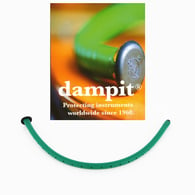
The days are getting shorter, your heat may have already kicked in a few times, and you’re starting to look for sweaters and coats you haven’t seen in months. Winter is coming, and that means dry air that can wreak havoc on your string instrument! As vapor is lost from the air, it sucks out moisture from the wood in your instrument, causing loose pegs, lowered string height, a change in tone, and even open seams or catastrophic cracks! Luckily, it is easy to prevent major damage, and even little inconveniences like tuning problems. Here are three easy steps that will keep your instrument in great shape through the cold, dry winter.
1. Monitor the humidity inside your case and in your practice area!
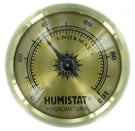 Many cases come with a digital or analog hygrometer, which will show the relative humidity of the air inside your case, which always gradually matches the air outside of the case. While the accuracy of some hygrometers may not always be precise, they do give you a fair warning as to when the humidity is beginning to fall. Keeping an eye on the reading every time you open your case and jotting it down in your practice journal is the best way to be warned of a change in humidity that could be dangerous to your instrument.
Many cases come with a digital or analog hygrometer, which will show the relative humidity of the air inside your case, which always gradually matches the air outside of the case. While the accuracy of some hygrometers may not always be precise, they do give you a fair warning as to when the humidity is beginning to fall. Keeping an eye on the reading every time you open your case and jotting it down in your practice journal is the best way to be warned of a change in humidity that could be dangerous to your instrument.
A new Planet Waves device by D’Addario is called the Humiditrak, 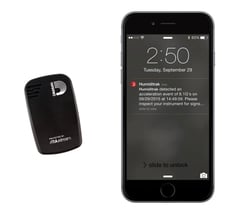 and it monitors the temperature and humidity inside your case, alerting you to when you may have forgotten it in the car, set it in front of a heater or window, or maybe just need to refill the humidifier. It also measures impacts and accelerations, so you can know if your precious instrument is being mishandled. The device stays in your case, and connects with your phone, keeping you in the know!
and it monitors the temperature and humidity inside your case, alerting you to when you may have forgotten it in the car, set it in front of a heater or window, or maybe just need to refill the humidifier. It also measures impacts and accelerations, so you can know if your precious instrument is being mishandled. The device stays in your case, and connects with your phone, keeping you in the know!
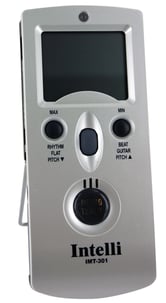 If you’re a busy musician and your instrument spends almost as much time out of the case as in it, you may need to monitor the humidity of your main practice room as well. Some metronomes and tuners include accurate digital hygrometers that can keep an eye on seasonal changes in your practice area. Just leave them on your stand or table, and see if air conditioning or heating may be drying out your instrument! When the humidity starts to drop, it is imperative that you humidify your case by adding water to a vapor bottle, instrument humidifier, or case humidifier. Adding humidity to the room where you do the most practicing can also reduce risk!
If you’re a busy musician and your instrument spends almost as much time out of the case as in it, you may need to monitor the humidity of your main practice room as well. Some metronomes and tuners include accurate digital hygrometers that can keep an eye on seasonal changes in your practice area. Just leave them on your stand or table, and see if air conditioning or heating may be drying out your instrument! When the humidity starts to drop, it is imperative that you humidify your case by adding water to a vapor bottle, instrument humidifier, or case humidifier. Adding humidity to the room where you do the most practicing can also reduce risk!
2. Humidify your case!
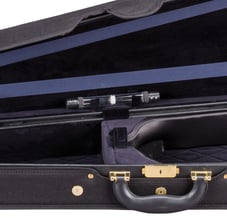 Living in the Midwest with humid summers and dry winters, I’ve found that making sure there is always water in my case’s vapor bottle from October to April really reduces the change in my instrument’s sound and tuning problems. This might mean refilling it twice per week or more, especially when I have the case open for hours at a time during practice. American Case Company cases come with extra-large vapor bottles, greatly reducing how often this needs to be done. If your case doesn’t have a vapor bottle, or if you’re concerned about having free-flowing liquid water inside your case, in-case humidifiers like the Stretto or Oasis use a gel medium to absorb the water, reducing the risk of spillage, while releasing vapor at a much faster rate.
Living in the Midwest with humid summers and dry winters, I’ve found that making sure there is always water in my case’s vapor bottle from October to April really reduces the change in my instrument’s sound and tuning problems. This might mean refilling it twice per week or more, especially when I have the case open for hours at a time during practice. American Case Company cases come with extra-large vapor bottles, greatly reducing how often this needs to be done. If your case doesn’t have a vapor bottle, or if you’re concerned about having free-flowing liquid water inside your case, in-case humidifiers like the Stretto or Oasis use a gel medium to absorb the water, reducing the risk of spillage, while releasing vapor at a much faster rate.
If you only have a small vapor bottle, or if you play cello or bass,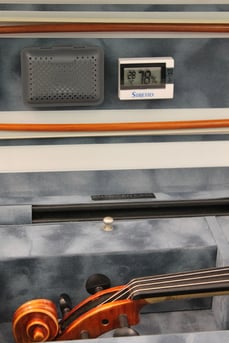 it is certainly worth getting an additional instrument humidifier or in-case humidifier. If you often leave your instrument in a stand, or don’t have much room in your case for more stuff, instrument humidifiers like the Dampit or Humidi Guard feed right into the f-hole, and will keep your instrument’s soundbox safe from cracks and open seams.
it is certainly worth getting an additional instrument humidifier or in-case humidifier. If you often leave your instrument in a stand, or don’t have much room in your case for more stuff, instrument humidifiers like the Dampit or Humidi Guard feed right into the f-hole, and will keep your instrument’s soundbox safe from cracks and open seams.
3. Keep your instrument’s temperature stable and in range.
A good violin, viola, cello, or bass case doesn’t just keep your instrument from being squashed or bruised, but also insulates against the elements. Wood-shell and foam cases offer the best protection from extreme cold or heat, but no case can keep the inside of the case at a regulated temperature forever. Yet, slowing the change in temperature is the best way to avoid severe damage. 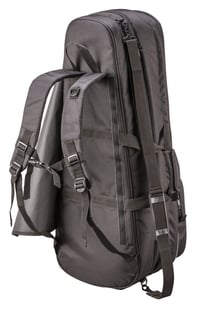 SHAR recommends not only using a high-quality case, but adding extra insulation with a Cushy Case Cover or Bam Hoodie. The Cushy Case Covers are like a thick winter coat for your instrument. They repel water, give you comfortable backpack straps, make you visible at night with reflective piping, and add additional storage space.
SHAR recommends not only using a high-quality case, but adding extra insulation with a Cushy Case Cover or Bam Hoodie. The Cushy Case Covers are like a thick winter coat for your instrument. They repel water, give you comfortable backpack straps, make you visible at night with reflective piping, and add additional storage space.
You’re instrument isn’t just at risk when it’s outside. Instruments left in a hot or cold vehicle or set near a window, radiator, or frequently used doorway are subject to constant changes in temperature that can cause damages or stress. Of course, if quick changes in temperature are bad for your instrument, opening your case at any time when the inside of the case is at a different temperature than the air outside of the case is about the worst thing you can do. This includes forgetting your instrument in the cold car overnight and then rushing it inside to check on it. Always give your case an hour or more to reach equilibrium before opening it!



